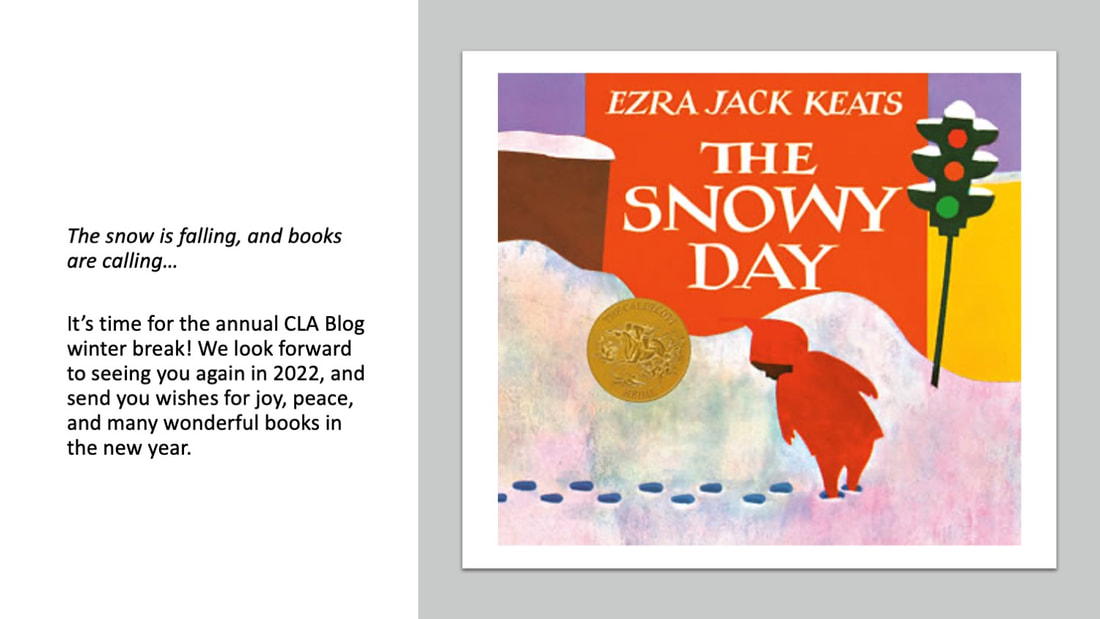by Xenia Hadjioannou, Lauren Liang, Liz Thackeray Nelson (Editors of the CLA Blog) During the Closing Session of the 2021 NCTE Convention, María E. Fránquiz, Program Chair for the 2022 conference, announced the theme of the 2022 Annual NCTE Convention: ¡Sueños! Pursuing the Light. With this call for proposals, María is inviting us "to think of ways that we can pursue and bring light to each other, to our profession, and our organization." The full clip of her announcement is provided below. Clip from the Closing Session at NCTE 2021: María Fránquiz announcing the theme for NCTE 2022 Published with permission | Transcript Out of the Darkness Grows the Light In her announcement, María Fránquiz discussed drawing inspiration from the work of Sister Mary Corita Kent, "a social justice advocate, artist educator, designer and poet" and shared Kent's poem from the 1977 serigraph titled out of the darkness. María also referenced a recently published children's biography of Corita Kent written by Matthew Burgess and illustrated by Kara Kramer: Make Meatballs Sing: The Life and Art of Corita Kent. The biography, which was composed in close collaboration with the Corita Center and includes reproductions of her work, was recently selected as one of the 2022 Orbis Pictus recommended books.
Golden Line Strategy
Xenia Hadjioannou is Associate Professor of Language and Literacy Education at the Harrisburg Campus of Penn State. She is Vice President of CLA and co-editor of the CLA Blog. Lauren Aimonette Liang is Associate Professor at the Deparment of Educational Psychology of the University of Utah. She is Past President of CLA and co-editor of the CLA Blog. Liz Thackeray Nelson is a doctoral candidate at the University of Utah. She is co-chair of CLA's membership committee and co-editor of the CLA Blog. BY ALLY HAUPTMAN Why do we teach vocabulary? At its core increasing a student’s vocabulary gives that student power. The power to express ideas, opinions, and feelings. The power to find the right words to persuade, inform, or to bring joy to readers. The power to build knowledge and understand complex concepts across disciplines. To effectively teach vocabulary and empower our students, teachers must provide rich and varied language experiences, learning experiences that connect words within a context, and opportunities to develop word consciousness (Allen, 2014). Students need opportunities to read, write, and talk in authentic ways. Teachers can model how to use words in context, and immerse students in the language of different disciplines. We need to show students how powerful words are in helping us communicate our ideas. We have to show them how to become “word collectors.” We need to teach vocabulary within context, and intentionally put students in situations where they make connections between words and concepts. One of the most effective ways for students to make connections and construct meaning is to make sure new vocabulary is presented within a meaningful context. This is where excellent children’s literature comes into play. There are so many brilliantly written non-fiction picture books that can be used to teach vocabulary within a context. With students, I refer to these non-fiction books that are accessible to young readers and use text features in interesting ways, as jazzy non-fiction. Students are drawn to these texts because they make the subject fascinating for readers. One author whose jazzy nonfiction I often use is Jess Keating. She is an author, artist, and zoologist who creates texts that spark curiosity about animals and women in science. In her World of Weird Animals series, she uses photographs, cartoons, and text features in unique and engaging ways. This is what makes her books so appealing to young readers, but as a teacher I am drawn to the complex vocabulary she uses in her writing. Jess Keating books can be used as mentor texts for writing, sparking a myriad of writing possibilities for students as they begin to see creative ways to write nonfiction. Jess Keating books are perfect for modeling a rich array of metacognitive comprehension strategies like determining importance. Jess Keating books are the best for teaching science concepts and related vocabulary within an authentic context. Cute As an Axolotl: Discovering the World’s Most Adorable Animals
In this text, Jess Keating and David DeGrand present a combination of stunning animal photographs, cartoon animals, and text features that invite readers to learn about some seriously cute creatures. For each animal, Keating lists facts like species name, size, diet, habitat, predators and threats. She also tells the reader strange, interesting facts that leave you wanting to do more research on these adorable creatures.
Learning Experience Using Cute As an Axolotl
|
Authors:
|
CLA
About CLA
|
Journal of Children's Literature
Write for JCL
|
ResourcesCLA-sponsored NCTE Position Statements
|
Members-Only Content
CLA Video Library
|
© COPYRIGHT 2018.
ALL RIGHTS RESERVED |










 RSS Feed
RSS Feed